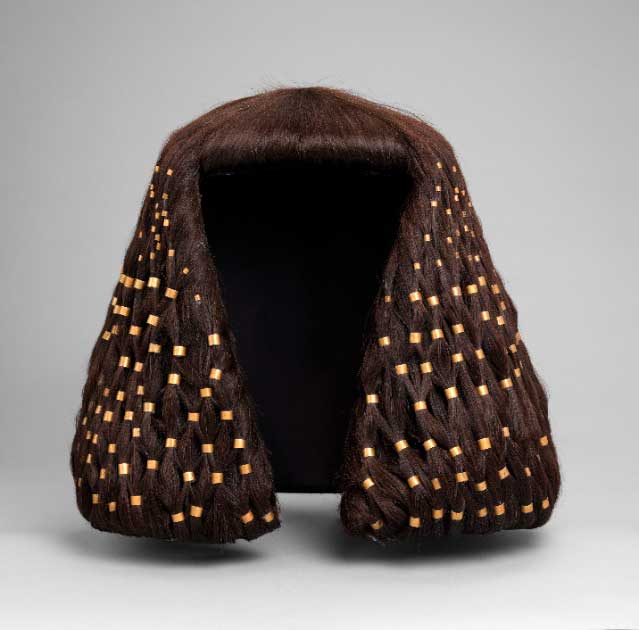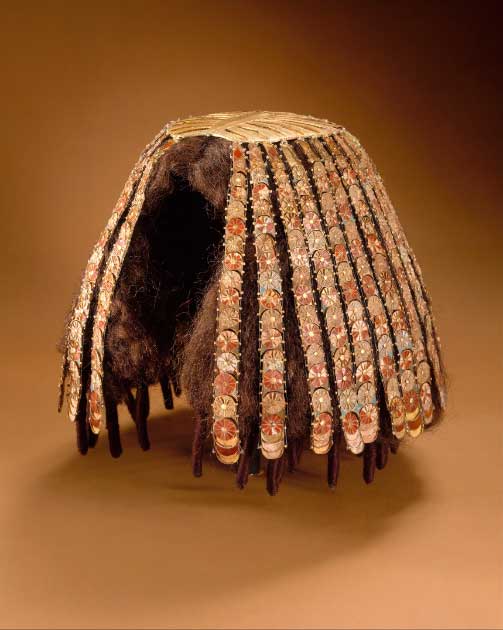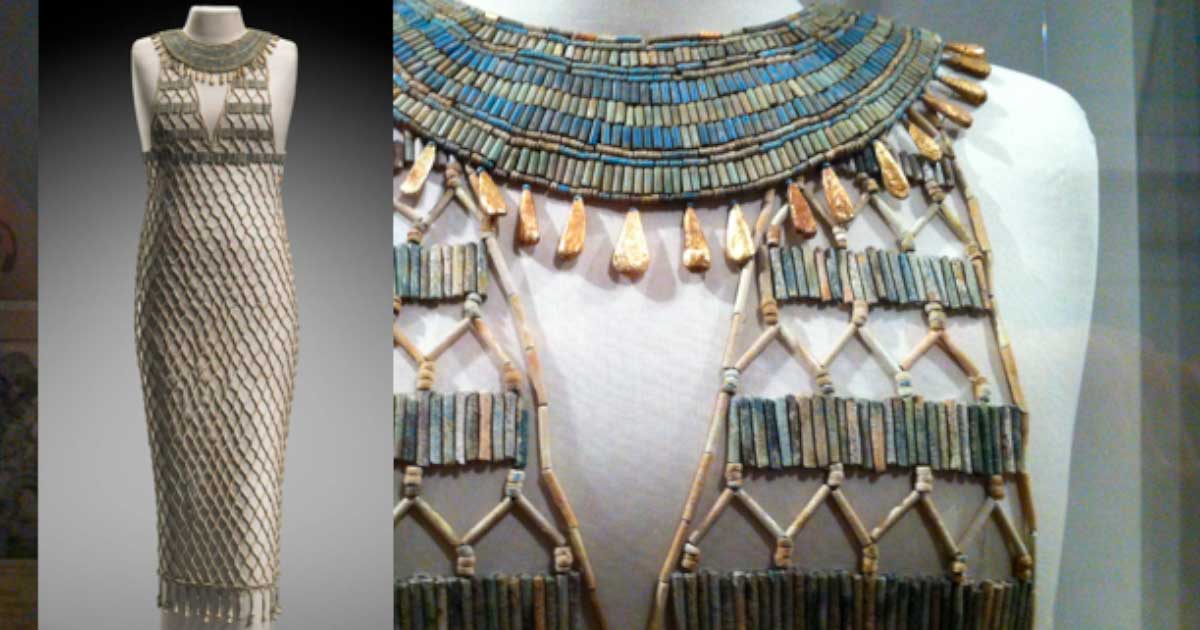Dress like an Egyptian: Fashion, Style and Simplicity in Ancient Egyptian Clothing
The ancient Egyptians may have created some of the most mind-bogglingly complex and intricate monuments known to man, but when it came to clothing, they kept it remarkably simple. Ancient Egyptian traditional clothes were made from locally sourced materials and were surprisingly egalitarian, with women mostly wearing the same clothes as men. There were, however, exceptions and the most elite members of Egyptian society showed remarkable style and fashion.
The Gender-Free Fashion of Ancient Egyptian Clothes
For the ancient Egyptians, they kept their clothing to a bare minimum. Given the heat of Egypt, this was quite clever. In fact, if you were a child, you didn’t wear any clothes for most of the year. For the adults, however, their clothes were made from locally sourced cotton or linen. Some farmers also made their clothes from the hides of their livestock. Clothing was most commonly made from linen, given the abundance of flax (used to make linen) growing along the Nile. Linen is a light, breathable material that is comfortable to wear in intense heat.
For the everyday, lower-class Egyptians of the Early Dynastic Period (3150 - 2613 BC) and the Old Kingdom (2613 - 2181 BC), men and women wore the exact same clothing. The depictions of men and women from this period show a knee-length white kilt-like garment, held up by a belt. The rest of their bodies were left bare, although some people wore sandals made of straw. The wealthier men would wear the same clothing but made with even lighter linen.
For wealthier women, however, clothing was a bit more complex. The upper-class women of the Old Kingdom wore long, straight dresses which covered their breasts. Much like the clothing of upper-class men, these dresses were made with lighter linens than that of the common people. These dresses were much more expensive to make than the kilts too. These dresses were held in place with straps over the shoulders and sometimes a sheer tunic was worn over them. Women also wore dresses made entirely of beads.
- Egyptian Tot's Sock Reveals Ancient Clothes Production Secrets
- Ancient Egyptian Makeup: Beauty and Protection with Poison

Egyptian bead net dress. (Jennifer Brown/CC BY-NC-SA 4.0)
Who Used Makeup in Ancient Egypt? EVERYONE!
Also common among both men in women in Ancient Egypt was the use of makeup. Oils and perfumes, as well as eye and facial paints, were used to enhance the appearance of men and women of all social classes. The upper classes could, of course, afford better products. Eye paint in particular was extremely common. A pencil made of wood, ivory or stone was used to apply kohl to the eyelids in order to emphasize their size or shape.
Kohl was made from the mineral galena, which was found in the mountain regions of Sinai. It was then mixed with malachite and other minerals into oil or fat until it produced a paste or cream. This form of kohl was expensive to make, and therefore only available to the upper classes, but the poorer people also had their own, alternative form of kohl. It also had a medical purpose, in that it helped protect the eyes from infections caused by sunlight, dust or flies. Powdered green malachite was often brushed under the eyes as well, while a rouge color was applied to the face and lips through the use of red ochre.
- Linen: The Ancient Cloth That Still Beats Modern Fabrics
- When it Came to Ancient Undergarments Less Was Often More

Large wig rings of Sithathoryunet, ca. 1887–1813 BC (Public Domain)
Accessories: Making or Breaking the Outfit since Ancient Egypt
Wigs and jewelry were also a big part of Ancient Egyptian traditional clothes. This was especially the case for upper-class people. Jewelry and wigs were used to show off their wealth, but also because they believed it made them more attractive to the gods. They wore rings, earrings, bracelets, decorated buttons, necklaces, neck collars and pendants. This jewelry was often made from gold or precious stones. Lower-class people also managed to obtain jewelry, although it was usually made from colored pottery beads.
The design of Ancient Egyptian jewelry often reflected religious themes. Motifs included symbols of gods and goddesses and hieroglyphic symbols, as well as birds, animals, and insects that played a role in their creation myth. Commonly seen were the scarab (a type of beetle), the Eye of Ra, lotus and papyrus plants, cobras, and symbols such as the Isis knot, shen ring (symbol of eternity) and ankh (symbol of life). A person’s jewelry was placed in his or her grave when they died, so it could be used in the afterlife.

Rosettes for wig, circa 1479 –1425 BC, New Kingdom Dynasty 18, reign of Thutmose III (Public Domain)
In ancient Egypt, wigs were worn because they were more comfortable in the arid climate, and they made personal hygiene easier. For example, the prevention of lice became much easier thanks to the use of wigs. Wigs were made out of human hair until the Second Intermediate Period (1782-1570 BC) when horses were introduced to Egypt. After that, both horsehair and human hair were used for wigs. They were padded on the inside using vegetable fibers.
Wigs were made in different styles to be worn on different occasions. For example, different wigs were needed for a family gathering and for a festival. Most wigs were long and heavy and were carefully arranged into plaits and strands. The wealthy often adorned their wigs with beads and great jewels. Poorer people had to use wigs made from papyrus plants or simply shave their heads and wear a head covering.
The ancient Egyptians took good care of their physical appearance, wearing nice clothes, makeup, jewelry, and wigs in order to look better. The major reason for this is because they believed a primary goal of their existence was to make themselves worthy of eternity, and taking care of their physical appearance and their health was one component of doing that.
Top image: Main: Earliest surviving beadnet dress with the lozenge pattern (CC by SA 3.0). Inset: A bead-net dress. Photo source: Museum of Fine Arts, Boston.
By Mark Brophy
References
Canadian Museum of History. Clothing and Adornment. Available at: https://www.historymuseum.ca/cmc/exhibitions/civil/egypt/egcl06e.html
History on the Net. Egyptian Clothing: Pharaohs to Commoners. Available at: https://www.historyonthenet.com/egyptian-clothing
Mark, J. J. 27/3/2017. Fashion and Dress in Ancient Egypt. Available at: https://www.worldhistory.org/article/1037/fashion--dress-in-ancient-egypt/
Mark, J. J. 4/4/2017. Cosmetics, Perfume and Hygiene in Ancient Egypt. Available at: https://www.worldhistory.org/article/1061/cosmetics-perfume--hygiene-in-ancient-egypt/




















Comments
I watched the Nutty History video. That was a bunch of brain cells I'll never get back.